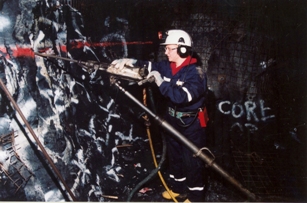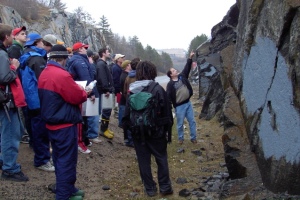The Mining Industry Human Resource Council (MiHR) was formed to address the human resources challenges in the Canadian mining industry.
This case study on post-secondary mining education in the Sudbury region came from a 2005 report called “Prospecting the Future: Meeting Human Resources Challenges in the Canadian Minerals and Metals Industry”.
Please note that some of the enrolment figures will be much higher today and some charts have been omitted due to format issues.
MiHR Sudbury Case Study Focus: Education/Training and Relationship with Mining Industry
Overview
This case study examines the mining industry in Sudbury and its well-developed infrastructure for mining-related education, training and research.
Sudbury is one of Canada’s few long-lived mining sites, with mining operations dating back more than 100 years. The mining industry got its start in the area in 1883, when ore with high levels of copper sulphites were discovered. The formation is one of the most productive mining sites in the world and is generally thought to be the result of a meteorite impact.(58) The major commodities mined in the area are nickel, copper, gold, silver, platinum group metals and cobalt.
Sudbury is Canada’s leading mining community and is considered one the world’s four great mining “city-states.” (59) It is the only city in the world with 15 producing mines within city limits.
With known reserves, the industry is predicted to continue for another 100 years,(60) although the rate of production, and hence level of employment, will eventually decline as ore-bodies are exhausted.
The “Sudbury Mining Supply and Services Cluster” is the largest integrated mining cluster in the world.

























 In 2008, for the first time in human history, more than half of the global population will be living in cities. The planet is undergoing the largest wave of urban growth ever, spearheaded by the massive migration of Chinese farmers to their cities.
In 2008, for the first time in human history, more than half of the global population will be living in cities. The planet is undergoing the largest wave of urban growth ever, spearheaded by the massive migration of Chinese farmers to their cities. According to a comprehensive study by the Mining Industry Training and Adjustment Council (MITAC), the Canadian mining industry needs to fill 81,000 high-paying, highly skilled new positions in the next 10 years.
According to a comprehensive study by the Mining Industry Training and Adjustment Council (MITAC), the Canadian mining industry needs to fill 81,000 high-paying, highly skilled new positions in the next 10 years.  The Mining Industry Human Resources Council (MiHR), is undertaking a National Occupational Standards Project which will provide detailed essential skills profiles, core competencies and occupational standards for workers in underground mining, surface mining, and minerals processing.
The Mining Industry Human Resources Council (MiHR), is undertaking a National Occupational Standards Project which will provide detailed essential skills profiles, core competencies and occupational standards for workers in underground mining, surface mining, and minerals processing.  The Canadian mining industry is growing, mainly due to the expansion of the global economy. This global expansion, however, is placing increased pressure on mining companies to recruit workers from around the world.
The Canadian mining industry is growing, mainly due to the expansion of the global economy. This global expansion, however, is placing increased pressure on mining companies to recruit workers from around the world.  Sylvia Barnard is President of Cambrian College which is located in Sudbury, Canada. The college has an enrolment of over 4,400 full-time students and approximately 8,000 part-time personal, professional and human resources development courses and seminars.
Sylvia Barnard is President of Cambrian College which is located in Sudbury, Canada. The college has an enrolment of over 4,400 full-time students and approximately 8,000 part-time personal, professional and human resources development courses and seminars.